ICHIGO ICHIE 一期一会
- HOME
- ICHIGO ICHIE 一期一会
“Ichigo Ichie”…一期一会
“One moment, one meeting”
is a Japanese phrase that embodies the idea of cherishing every encounter as a unique and irreplaceable experience. We welcome you all with that spirit of Ichigo Ichie, and we will teach you how to continue enjoying that experience even after you return home.
What you will learn at our Ichigo Ichie class are…
・Matcha, Sado (Tea Ceremony)
・Onigiri (Riceball) and Dashimaki Tamago
・Wisdom of the ancient Japanese
・Furoshiki (Japanese traditional wrapping culture)
・Traditional toys in Japan
・Origami
・Hagoita
・Kendama
You are able to recreate the experience you had in Japan after returning home.
Traditional incense-smelling ceremony, Kodo
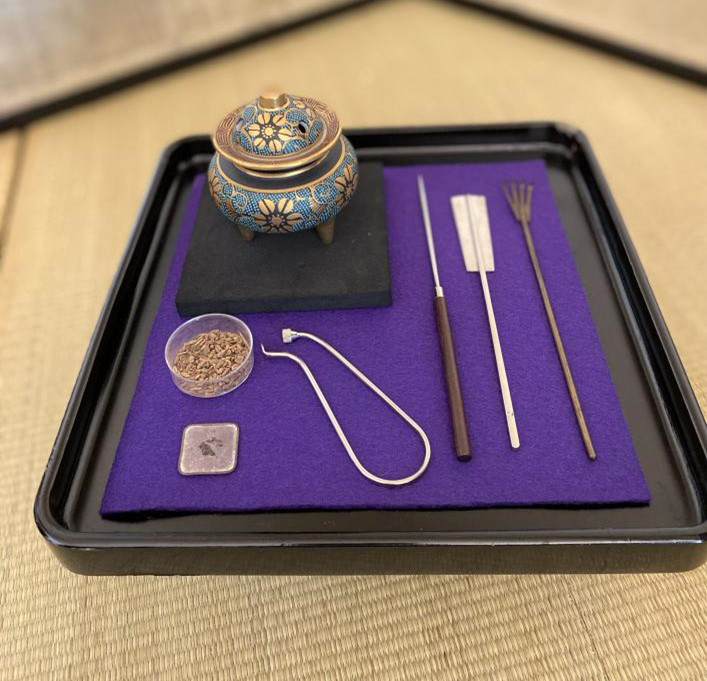
Thousand years of history!
We welcome you with the traditional Japanese culture of burning fragrant wood and enjoying its distinctive scent.
Please spend an elegant time.
Matcha
Sado, Tea ceremony
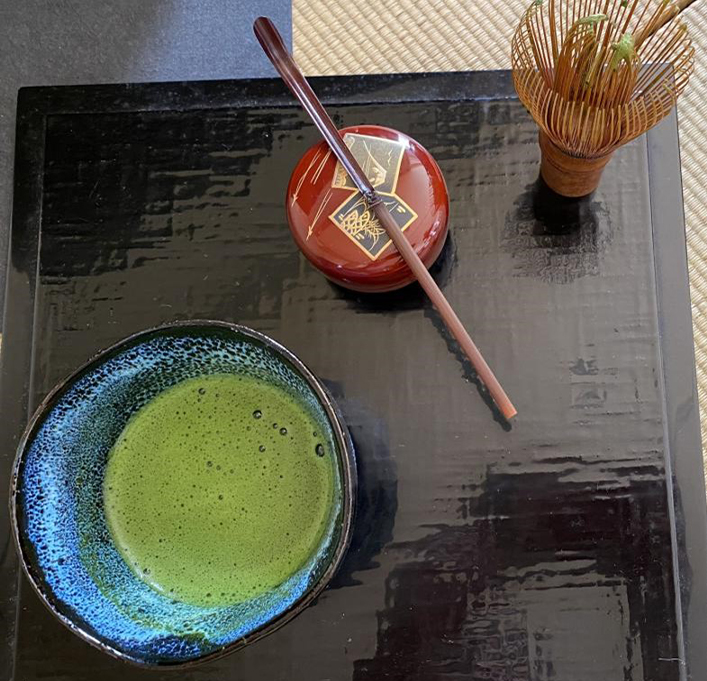
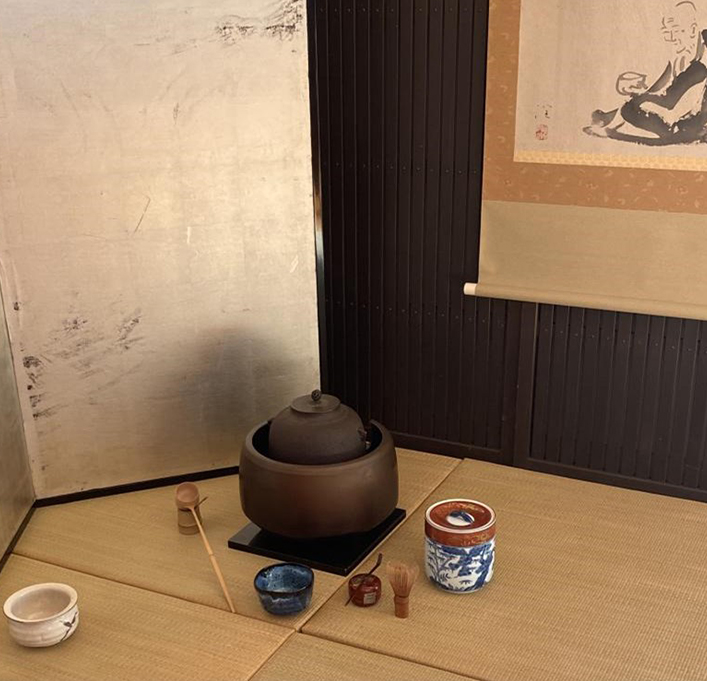
This will be the main event of the experience. We will be teaching you how to make your own matcha and having a traditional tea ceremonies date back over 800 years and is a very important part of Japanese culture. During the cherry blossom season, you can experience matcha tea in the garden under the cherry blossom trees, or in your room depending on the season.
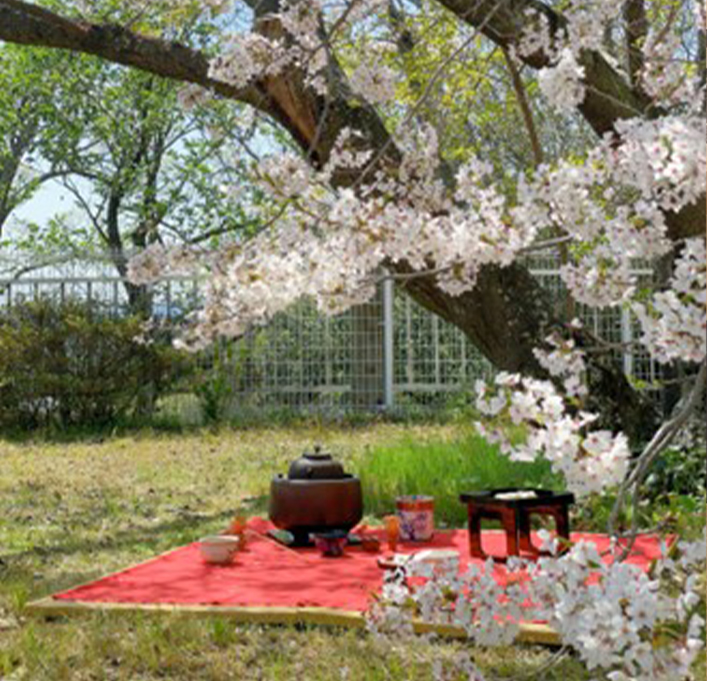
Would you like to enjoy the matcha experience even after returning from Japan? We will teach you how to recreate a space where you can enjoy matcha using tatami.
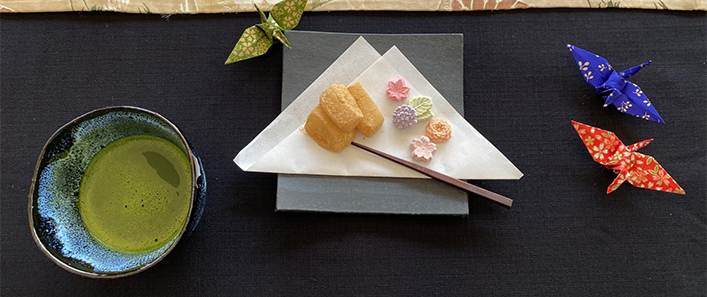
Onigiri (Riceball)
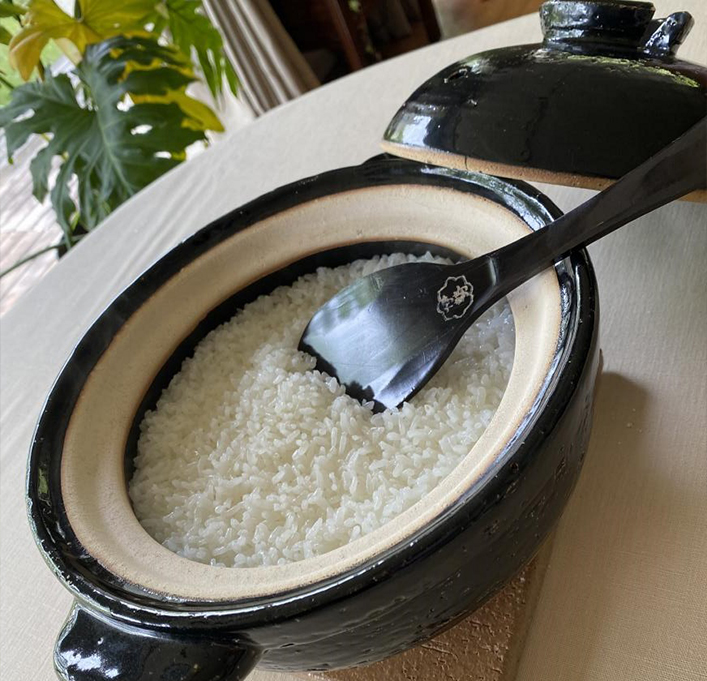
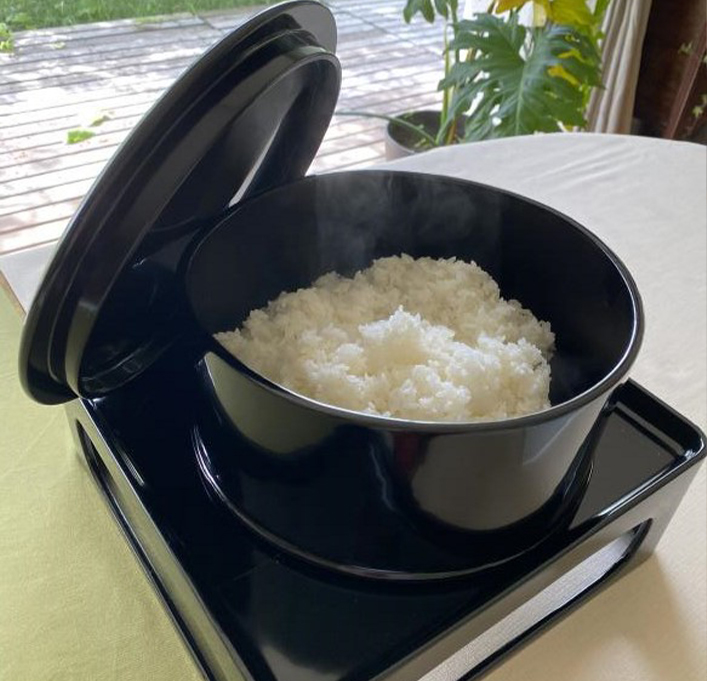
You will make onigiri with high quality Japanese rice cooked in a traditional clay pot. The clay pot enhances the flavor of the Onigiri. Enjoy rice ball making with your favorite toppings and rice that is delicious even when it gets cold.
Enjoy your meal with the rice balls you made yourself, standard Japanese miso soup, dashimaki tamago, simmered dishes, and pickled vegetables. Dashimaki Tamago is Japanese folded egg omelets, in which the egg is mixed with a traditional Japanese broth. Afterwards, enjoy a Japanese-style dessert. Please learn how to use chopsticks while eating and enjoy Japanese food. As chopstick instructors, we will teach you in a fun way.
Dashimaki Tamago is Japanese folded egg omelets, in which the egg is mixed with a traditional Japanese broth. If you cannot use chopsticks, we will teach you.
We will also teach you how to make a rice ball lunch “Obento” after returning home.
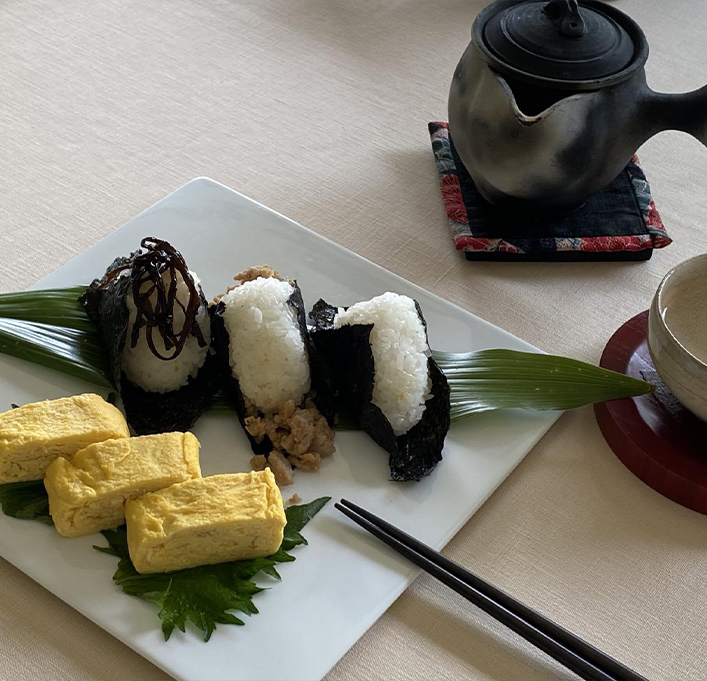
“Obento” is made with consideration for both vibrant colors and nutritional balance. Let’s take the extra step and make it with love for your own lunch, as well as for your family’s
lunch.
Allergy and Dietary Restrictions Notice:
We will be serving onigiri (rice balls), dashi-maki tamago(Japanese omelette), and miso soup during this experience. Please inform us if you have any allergies or dietary restrictions when you sign up. Common ingredients include soy, fish and eggs. We will take special care with the ingredients in our onigiri and miso soup.
Wisdom of the ancient Japanese
Furoshiki
Japanese traditional wrapping culture

Furoshiki is a symbol of Japanese wrapping culture, offering an eco-friendly, reusable alternative for packing. It can wrap objects of various shapes and sizes.

Participants will learn how to wrap wine and presents. Very stylish and convenient when going to a home party with wine.
It can alco be used for various purposes such as tapestries and a table cloth. Please learn how to use it in several ways and put it to good use.
Traditional toys in Japan
Origami or Chiyogami
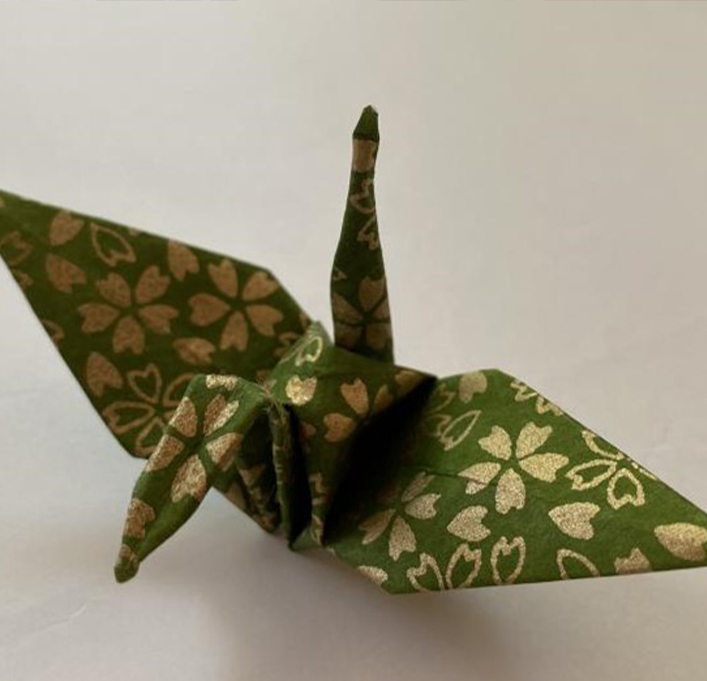
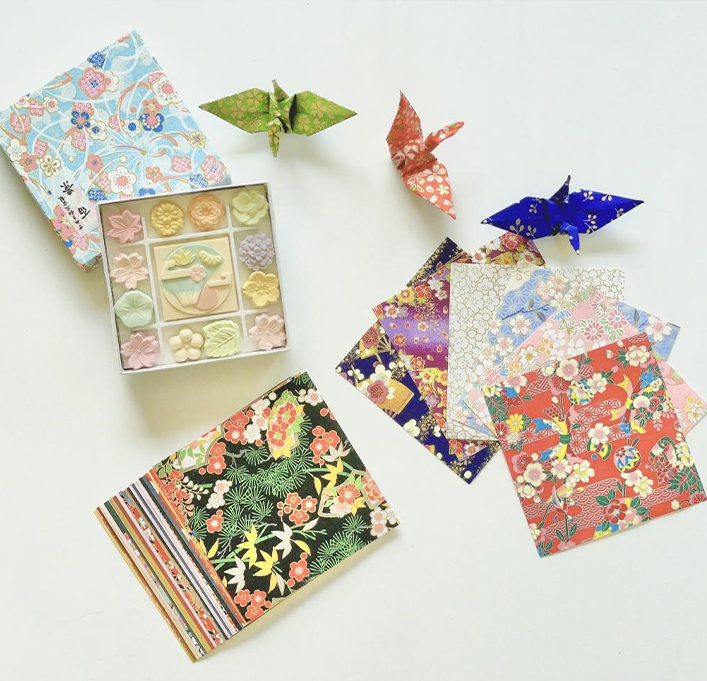
Origami has been folded since around 1700, and cranes have been folded as prayers for happiness and symbols of peace. Let’s try folding them using traditional Japanese paper.
Learn the art of origami, a quintessential part of Japanese culture. Interested in making the iconic cranes? Join us! We also have traditional Japanese toys like Hagoita (battledores) and Kendama available!
Hagoita
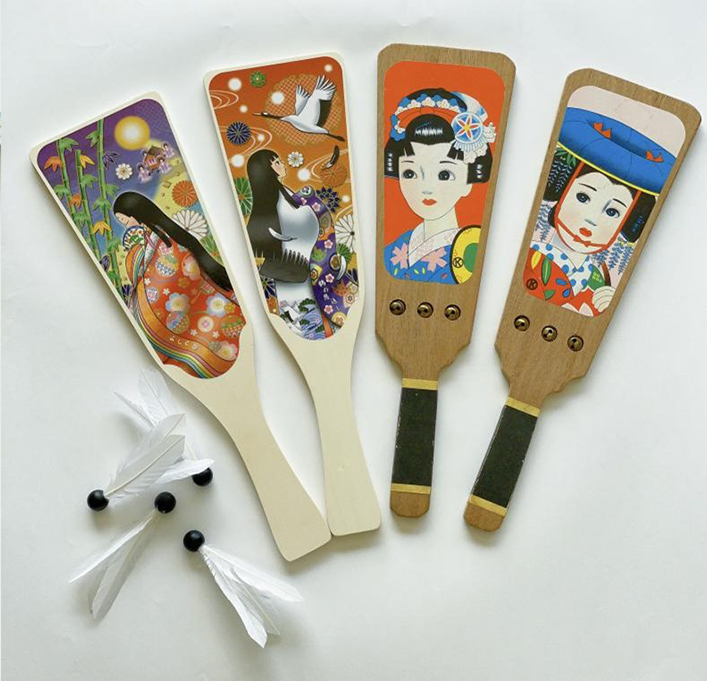
Playing Hagoita (battledores)
It began in 1444 as a game of playing with feathers. It’s difficult to play with a picture on it … it’s difficult than you imagine.
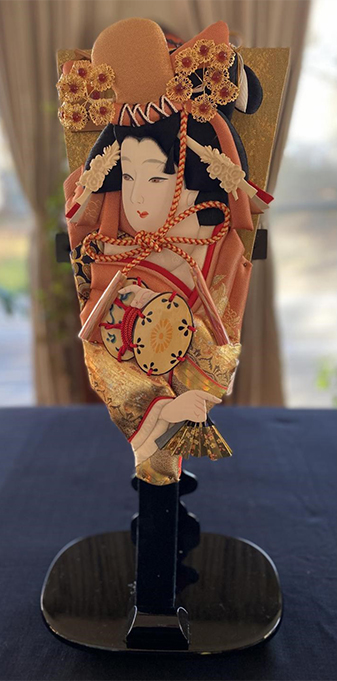
Kendama
Cup and Ball, Billeboquest (French)
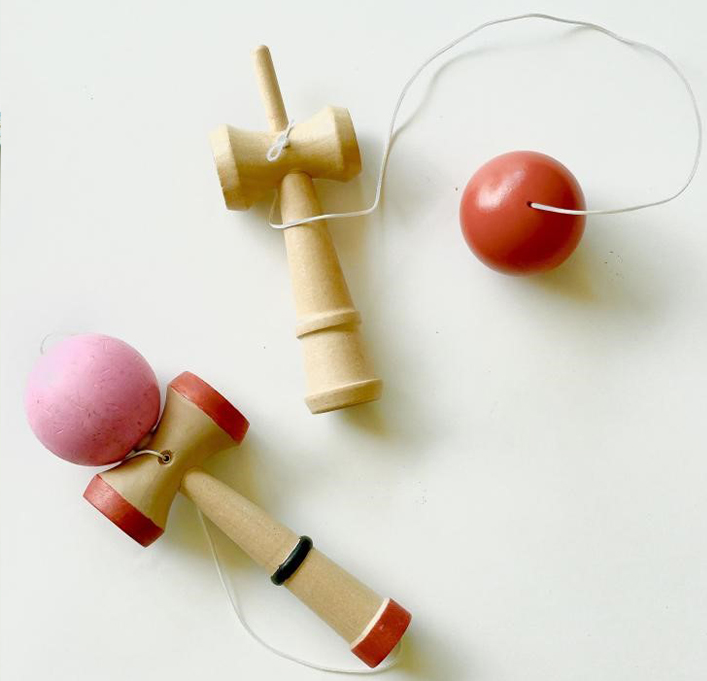
Kendama is said to have originated in France in the 16th century. It has been widely used in Japan since it was introduced in the 18th century. Their shapes differ around the world, and their distribution is also interesting from a folklore perspective.
Let’s play with a Japanese Kendama!
Souvenir
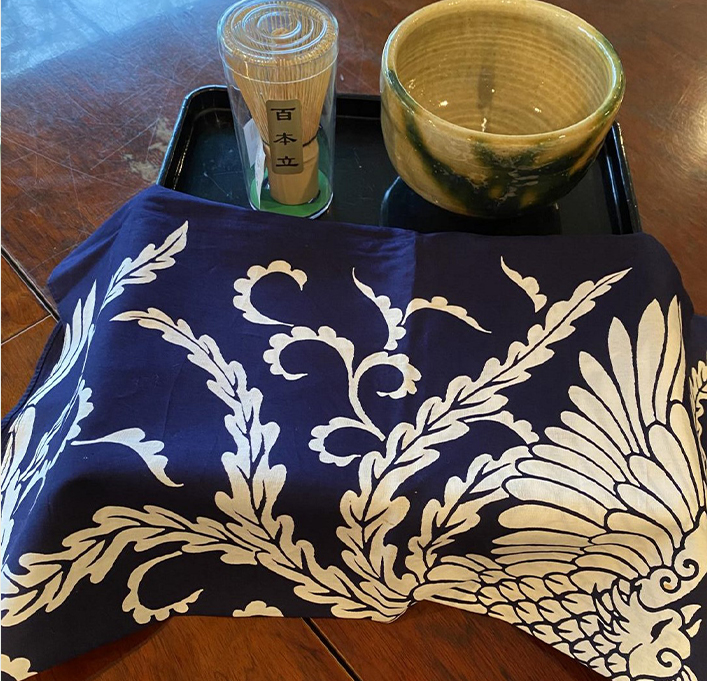
We hope you’ll love these souvenirs to commemorate your experience here and you can recreate even after you return home. They are:
Chasen (tea whisk) and Matcha Chawan (tea bowl)
Furoshiki with a design of your choice
Who & Where?
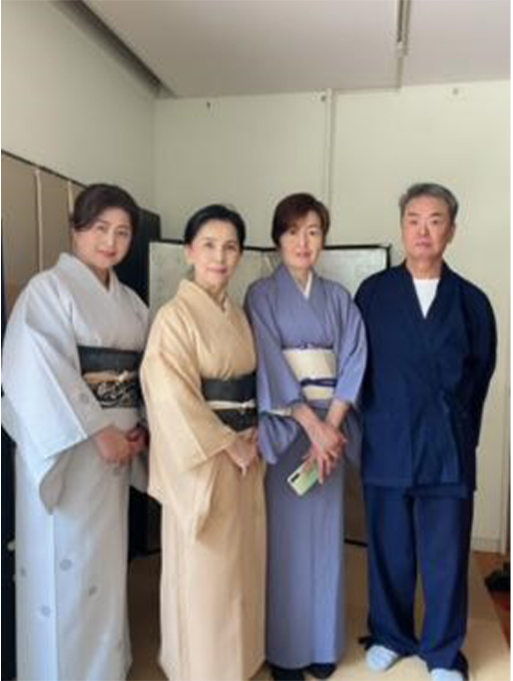
We will provide you with generous hospitality.
During the cherry blossom season, you can experience matcha tea in the garden under the cherry blossom trees, or in your room depending on the season.
Whether you’re sightseeing in Kyoto, Nara, or Osaka, or heading towards Kinosaki Onsen, please make sure to visit “Ichigo Ichie.” It’s a 22-minute ride on the Hankyu Line from Osaka Umeda Station, and you get off at Okamoto Station. Details will be provided after your reservation.


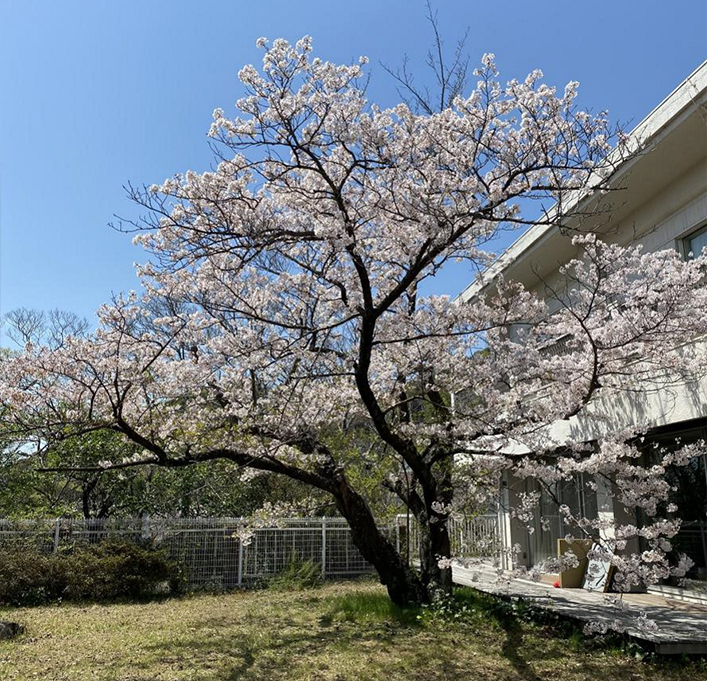
Class&Contact
Ichigo Ichie Class
- Location:Okamoto, Kobe City… Detailed access information will be provided after reservation.
- Maximum Capacity::10 people
- Class Time:Starts at 11 AM and lasts for 3-4 hours. For groups of 5 or more, we can adjust the time. Please consult with us.
- Cost: ¥38,000 per person (+10% tax) … Total:¥41,800
For reservations, please first inquire about the availability of seats. If you have any questions and inquiries, please click here too.
Seat availability and Inquiries
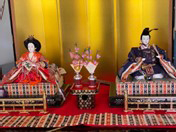
Hinamatsuri:
On this traditional Japanese event (held annually on March 3rd), we pray for the healthy growth of girls by displaying hina-dolls and preparing special dishes for celebration. Each dish has its own significance.
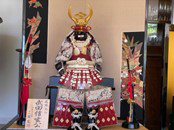

Tango no Sekku:
This is a traditional Japanese event held annually on May 5th. Armor helmets are displayed as charms for protection, praying for the safe growth of boys and wishing for their success in life. Special dishes are prepared and eaten to celebrate Tango no Sekku, each dish symbolizing a specific meaning.
